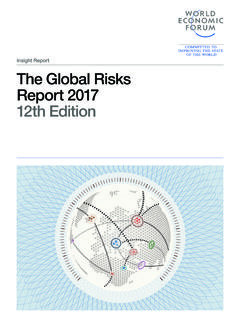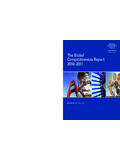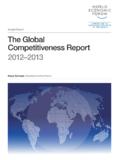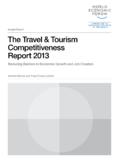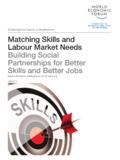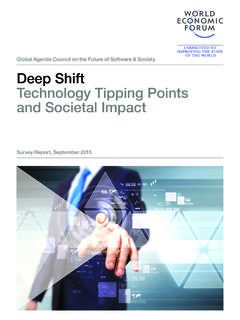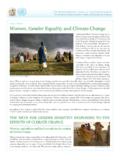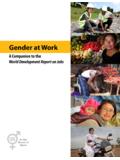Transcription of Global Agenda Closing the Economic Gender Gap: Learning ...
1 Global AgendaClosing the Economic Gender Gap: Learning from the Gender Parity Task Forces June 2016 WORLD Economic FORUM, 2016 All rights reserved. No part of this publication may be reproduced ortransmitted in any form or by any means, includingphotocopying and recording, or by any informationstorage and retrieval 130616 Case: 000204323 Closing the Economic Gender Gap: Learning from the Gender Parity Task Forces Contents3 Introduction4 The Task Force Model: Public-Private Collaboration to Advance Economic Gender Parity7 Overview of Gender Parity Task Forces7 Turkey Gender Parity Task Force10 Japan Gender Parity Task Force13 Mexico Gender Parity Task Force16 Korea Gender Parity Task Force18 Lessons Learned and Next Steps20 AcknowledgementsIn the 10 years since the World Economic Forum began measuring the Global Economic Gender gap it has narrowed by only 3%. This slow progress means that today the Global Economic participation and opportunity gap still stands at approximately 40%.
2 The educational attainment gap, however, stands at only 5%. Higher levels of female participation in education are not leading to commensurate employment opportunities for women many barriers to entry and progression still remain along the female talent pipeline. This disparity is particularly evident when looking at different levels of education and employment. For example even though more women than men are enrolling at university in the majority of countries covered by the Forum s Global Gender Gap Report (97 out of 145) and the average Gender gap in tertiary education is less than 10%, men still outnumber women in skilled jobs; the Gender gap in senior management roles is over 70%. This suggests that, though countries are ideally poised to maximize opportunities for women s participation in the labour market, many have failed to reap the returns from this investment in education due to inhibiting and unaddressed cultural, structural and workplace Forum s Gender Parity Initiative, therefore, brings together businesses, governments, civil society and other stakeholders to create partnerships that aim to integrate more women into the economy.
3 In particular, the initiative serves as a partner in Global , regional, national and industry transformations through a sustained flow of activities to shape, advance and monitor Gender parity. To meet the increasing demand from business and governments for benchmarking tools, best practices and policies that can effectively narrow the Economic Gender gap, the Forum produces the annual Global Gender Gap Report, which quantifies the magnitude of Gender -based disparities and tracks their progress over time. In addition, the Forum s repository of company best practices supports those seeking to implement such initiatives in their own organizations. The Forum also works directly with the private sector to encourage inter- and-cross industry collaboration on Gender parity, supporting companies and sectors to implement effective practices to narrow their Gender gaps and monitor their 2012, the Forum built on existing practical and analytical tools as well as on a widespread appetite for country-level action by launching Gender Parity Task Forces in Mexico, Turkey and Japan.
4 A further task force followed in 2014 in the Republic of Korea*. These task forces have sought to generate collaborations between public and private sector stakeholders with the capacity to bring more women into the economy. The overall objective has been to understand the barriers to female Economic participation and progress, to collaboratively explore and implement solutions in each country, and to provide a neutral platform for dialogue and report outlines the task force model, provides an assessment of the action and progress made in each country, and explores what lessons can be learned from these pilot projects. Looking across the experiences of each task force, it is clear that national and local policy efforts to address Gender gaps must be complemented by private sector action to be more effective. Collaboration, shared goals and ongoing communication between the public and private sectors are crucial for maximizing the impact of action to advance Economic Gender parity.
5 Looking to the future, and as the official mandate of the task forces comes to an end in Japan, Mexico and Turkey (and with a year remaining in Korea), members have committed to building on the infrastructure created and continuing their collaborative efforts. There is also a great deal of potential for this model to be rolled out elsewhere, in partnership with regional and other actors or to be taken up independently by governments and domestic organizations wishing to pursue country-level action. As such, this report provides a guide for others looking to lead collaborative activity, including a consolidation of the key lessons learned from these initial task Forum would like to express its deep appreciation to the Gender Parity Task Force co-chairs for their leadership and vision, as well as to the Forum s Gender Parity Initiative s Stewards, the project teams that have supported this work inside the Forum, and the many stakeholders that have contributed to this work and continue to do so in Mexico, Japan, Turkey and Korea.
6 Introduction* From this point on referred to as 'Korea4 Closing the Economic Gender Gap: Learning from the Gender Parity Task Forces The Task Force Model: Public-Private Collaboration to Advance Economic Gender ParityTask force background The competitiveness of an individual economy or organization is determined by the skills and productivity of its workforce and the opportunities individuals have to integrate into the labour market. Ensuring the development and appropriate use of half a nation s available human talent is therefore critical for determining how successful a country or company will be. There is clearly also a strong values-based case for Gender equality; women and men should have equal access to health, education, Economic participation and earning potential, and decision-making powers. In recent years, an increasing energy and momentum around Gender parity issues has typically been focused within companies or on single-issue awareness raising, collaborations between civil society organizations and the private sector and/or partnerships between public sector bodies.
7 For example, increasing numbers of businesses are making policy changes, such as extending family and paternity leave and introducing unconscious biases training. Companies at the forefront of this Agenda are also attempting to create an impact that extends beyond their own business, for example, through mentoring and leadership programmes or influencing their value chain. In addition, many national governments have sought to lead progress on Gender parity through goals or targets for women s participation in civic and business leadership roles and through reforms to the care economy. Growing numbers of civil society organizations have also been launched to promote Gender parity domestically and internationally, many backed by corporate partners, and international organizations such as UN Women and the World Bank have established partnerships with governments and businesses to support public information campaigns and training on Gender parity. Despite the growing interest in Gender parity issues, however, initiatives focused on building public-private collaborations with a specific industry or country/regional focus are scarce.
8 Analyses of local barriers to female Economic participation, constructive dialogues, shared objectives and unified action between the public and private sectors are rare, if non-existent, in many countries. Given that government policies and leadership together with company action across talent pipelines, corporate cultures and accountability structures are all critical, the lack of infrastructure to facilitate public-private collaboration remains a major obstacle preventing accelerated progress. Similarly, an on-going scarcity of intra- and cross-industry collaborations is denying companies the benefits of shared Learning and best practices and opportunities to pursue shared goals and initiatives. To help meet this need for collaboration on Economic Gender parity the Forum and its constituents launched the Gender Parity Task Force model. The structure, focus and experience of this model are set out force modelFigure 1. Task force governance structureTwo public sector co-chairs (Relevant government minister(s), heads of relevant agencies)Steering Committee (CEO-level)Working Group (Heads of human resources and government adviser/civil servant level)Two private sector co-chairs (CEO-level, from large domestic employers)Public SectorPrivate Sector5 Closing the Economic Gender Gap: Learning from the Gender Parity Task Forces The task force model supports the analysis of Gender gaps in the local workforce and the development and implementation of shared strategies to narrow these gaps.
9 The four pilot task forces in Mexico, Japan, Turkey and Korea have sought to enable interactions among businesses and between business and government and serve as a neutral platform for dialogue and the launching, sharing and accelerating of new or existing initiatives on a range of employment issues. Such issues include hiring, retention and promotion, wage inequality, workplace culture, national and corporate policies around parental leave, and the integration of women-owned businesses along corporate value chains. The governance structure of the task force model is designed to encourage the co-leadership of activity by public and private sector leaders, supported by a steering committee of committed businesses and a working group of actors with the capacity to implement and help design new initiatives, such as heads of human resources and strategy and senior civil 2 plots the Global Gender Gap s Educational Attainment subindex against the Economic Participation and Opportunity subindex.
10 The data reveals four broad groups of countries:1. Countries that have closed or are generally Closing education gaps and show high levels of women s Economic participation2. Countries that have closed or are generally Closing education gaps, but show low levels of women s Economic participation3. Countries that have large education gaps as well as large gaps in women s Economic participation4. Countries that have large education gaps, but display small gaps in women s Economic participationIn the first broad group are countries that have made investments in women s health and education, and generally see the returns on this investment in terms of women s Economic and political participation. These countries include the Nordic countries, the United States, the Philippines, Canada, New Zealand and Australia. These countries have not, however, fully closed Economic and participation gaps; in particular, the gaps in senior positions, wages and leadership levels still persist.
